#Mobile Core Unit
Text
Hello chat
I don't know how to set up tumblr at all
I'll just make this a collection of screenshots of my main character in the game post NGS update I guess
______________________________________________________________



October 2022
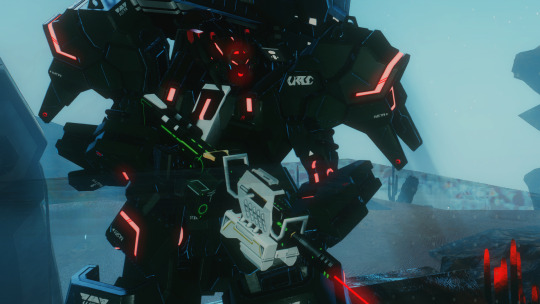

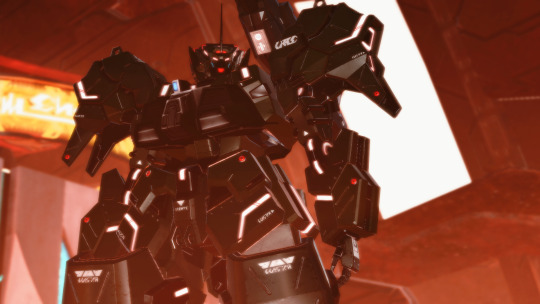
January 2022
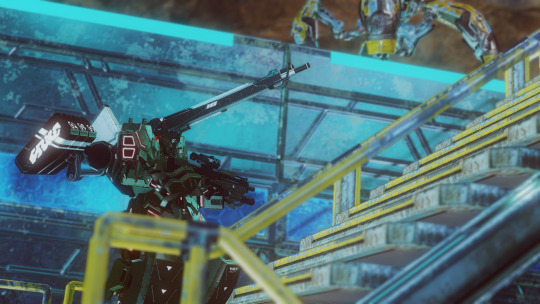
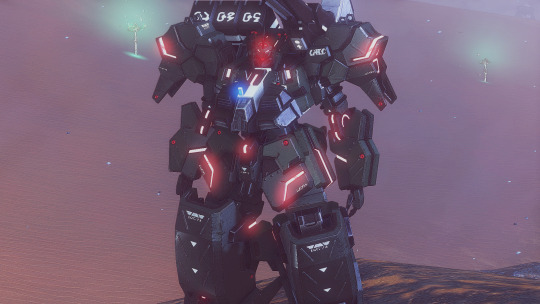
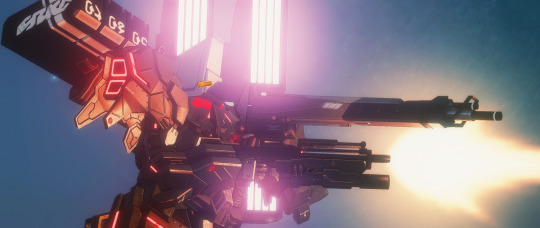

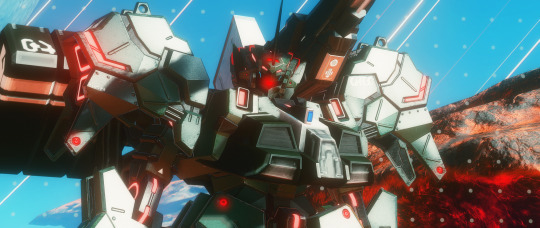
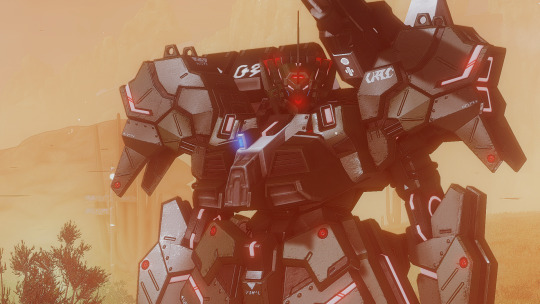

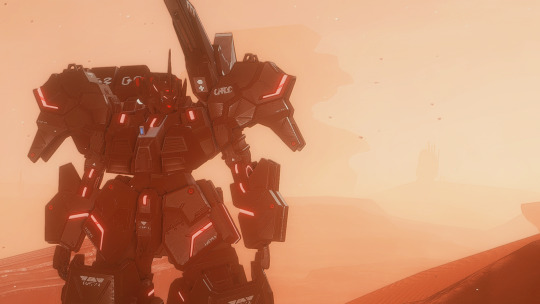




December 2021




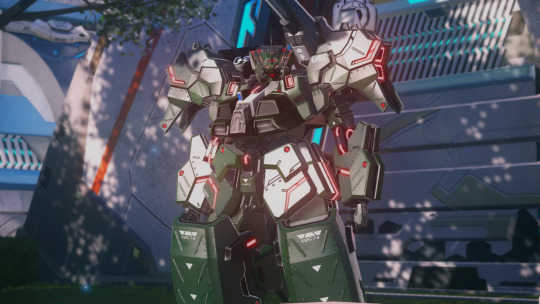
October 2021
#ATMCH-VCK#Alpha Triton Mobile Core Heavy - Versatile Combat Kit#Mobile Core Unit#pso2 ngs#pso2 new genesis#pso2 global#pso2ss
12 notes
·
View notes
Text
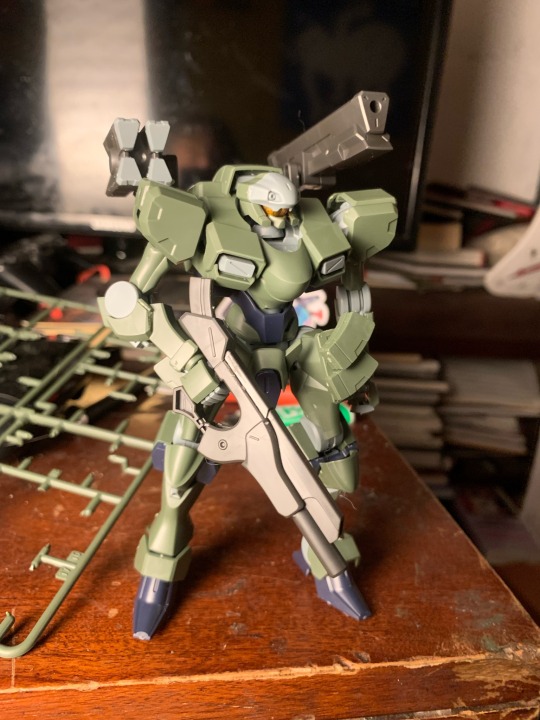

My sweet baby boy is almost done! I just gotta do some sanding then this bitch getting weathered and panel lined 😎
#gunpla#gundam#witch from mercury#grunt unit#plastic model#hobby kit#model kit#mobile suit#mech#armoured core#i mean look at the bitch he’s hella armoured core#his pilot probably loves to be degraded
54 notes
·
View notes
Text
Humans are weird: Prank Gone Wrong
( Please come see me on my new patreon and support me for early access to stories and personal story requests :D https://www.patreon.com/NiqhtLord Every bit helps)
“Filnar Go F%$@ Yourself!” was possibly the most disruptive software virus the universe had ever seen.
The program was designed to download itself to a computer, copy the functions of existing software before deleting said software and imitating it, then running its original programming all the while avoiding the various attempts to locate and remove it by security software.
What was strange about such a highly advanced virus was that it did not steal government secrets, nor siphon funds from banking institutions, it ignore critical infrastructure processes, and even bypassed trade markets that if altered could cause chaos on an unprecedented scale. The only thing the software seemed focused on was in locating any information regarding the “Hen’va” species, and deleting it.
First signs of the virus outbreak were recorded on the planet Yul’o IV, but once the virus began to migrate at an increasing rate and latched on to several subroutines for traveling merchant ships things rapidly spiraled out of control. Within a week the virus had infected every core world and consumed all information regarding the Hen’va. It still thankfully had not resulted in any deaths, but the sudden loss of information was beginning to cause other problems.
Hen’va citizens suddenly found that they were not listed as galactic citizens and were detained by security forces on numerous worlds. Trade routes became disrupted as Hen’va systems were now listed as uninhabited and barren leading to merchants seeking to trade elsewhere. Birth records and hospital information for millions of patients were wiped clean as they now pertained to individuals who did not exist.
Numerous software updates and purges were commenced in attempting to remove the virus. Even the galactic council’s cyber security bureau was mobilized for the effort, but if even a single strand of the virus’s code survived it was enough to rebuild itself and become even craftier with hiding itself while carrying out its programming. This was made worse by the high level of integration the various cyber systems of the galaxy had made it so the chance of systems being re-infected was always high.
After ten years every digital record of the Hen’va was erased from the wider universe. All attempts to upload copies were likewise deleted almost immediately leaving only physical records to remain untouched.
To combat this, the Hen’va for all official purposes adopted a new name; then “Ven’dari”. In the Hen’va tongue in means “The Forgotten”, which is rather ironic as the Hen’va have had to abandon everything about their previous culture to continue their existence. The virus had become a defacto component of every computer system in the galaxy and continued to erase all information related to the Hen’va. Even the translator units refused identify the Hen’va tongue and so the Ven’dari needed to create a brand new language.
It wasn’t until another fifty years had passed before the original creator of the virus stepped forward and admitted to their crime. A one “Penelope Wick”.
At the time of the programs creation Ms. Wick was a student studying on Yul’o IV to be a software designer. While attending the institution Ms. Wick stated that a fellow student, a Hen’va named “Filnar”, would hound her daily. He would denounce her presence within the school and repeatedly declared that “what are the scrapings of humans compared to the glory of the Hen’va?”
The virus was her creation as a way of getting back at the student for his constant spite. Ms. Wick was well aware of the dangers it could pose if released into the wild and so had emplaced the limitation that the virus would only infect computers on site with the campus. The schools network was setup that students could only work on their projects within the confines of the institution to ensure they did not cheat and have others make them instead. What she had not counted on was this rule only applied to students and not teachers. So when a teacher brought home several student projects to review and then sharing those infected files with their personal computer, the virus then gained free access to the wider planets networks.
When the Ven’dari learned of this there were several hundred calls for Ms. Wick to be held accountable for her actions, and nearly twice as many made to take her head by less patient individuals who had seen their entire culture erased. Much to their dismay Ms. Wick died shortly after her confession from a long term disease that had ravaged her body for several years.
Much to her delight, she had achieved her goals of removing the source of her mockery.
#humans are insane#humans are weird#humans are space oddities#humans are space orcs#story#scifi#writing#original writing#niqhtlord01#funny#prank#prank gone wrong#virus
323 notes
·
View notes
Text
So I don't know how people on this app feel about the shit-house that is TikTok but in the US right now the ban they're trying to implement on it is a complete red herring and it needs to be stopped.
They are quite literally trying to implement Patriot Act 2.0 with the RESTRICT Act and using TikTok and China to scare the American public into buying into it wholesale when this shit will change the face of the internet. Here are some excerpts from what the bill would cover on the Infrastructure side:
SEC. 5. Considerations.
(a) Priority information and communications technology areas.—In carrying out sections 3 and 4, the Secretary shall prioritize evaluation of—
(1) information and communications technology products or services used by a party to a covered transaction in a sector designated as critical infrastructure in Policy Directive 21 (February 12, 2013; relating to critical infrastructure security and resilience);
(2) software, hardware, or any other product or service integral to telecommunications products and services, including—
(A) wireless local area networks;
(B) mobile networks;
(C) satellite payloads;
(D) satellite operations and control;
(E) cable access points;
(F) wireline access points;
(G) core networking systems;
(H) long-, short-, and back-haul networks; or
(I) edge computer platforms;
(3) any software, hardware, or any other product or service integral to data hosting or computing service that uses, processes, or retains, or is expected to use, process, or retain, sensitive personal data with respect to greater than 1,000,000 persons in the United States at any point during the year period preceding the date on which the covered transaction is referred to the Secretary for review or the Secretary initiates review of the covered transaction, including—
(A) internet hosting services;
(B) cloud-based or distributed computing and data storage;
(C) machine learning, predictive analytics, and data science products and services, including those involving the provision of services to assist a party utilize, manage, or maintain open-source software;
(D) managed services; and
(E) content delivery services;
(4) internet- or network-enabled sensors, webcams, end-point surveillance or monitoring devices, modems and home networking devices if greater than 1,000,000 units have been sold to persons in the United States at any point during the year period preceding the date on which the covered transaction is referred to the Secretary for review or the Secretary initiates review of the covered transaction;
(5) unmanned vehicles, including drones and other aerials systems, autonomous or semi-autonomous vehicles, or any other product or service integral to the provision, maintenance, or management of such products or services;
(6) software designed or used primarily for connecting with and communicating via the internet that is in use by greater than 1,000,000 persons in the United States at any point during the year period preceding the date on which the covered transaction is referred to the Secretary for review or the Secretary initiates review of the covered transaction, including—
(A) desktop applications;
(B) mobile applications;
(C) gaming applications;
(D) payment applications; or
(E) web-based applications; or
(7) information and communications technology products and services integral to—
(A) artificial intelligence and machine learning;
(B) quantum key distribution;
(C) quantum communications;
(D) quantum computing;
(E) post-quantum cryptography;
(F) autonomous systems;
(G) advanced robotics;
(H) biotechnology;
(I) synthetic biology;
(J) computational biology; and
(K) e-commerce technology and services, including any electronic techniques for accomplishing business transactions, online retail, internet-enabled logistics, internet-enabled payment technology, and online marketplaces.
(b) Considerations relating to undue and unacceptable risks.—In determining whether a covered transaction poses an undue or unacceptable risk under section 3(a) or 4(a), the Secretary—
(1) shall, as the Secretary determines appropriate and in consultation with appropriate agency heads, consider, where available—
(A) any removal or exclusion order issued by the Secretary of Homeland Security, the Secretary of Defense, or the Director of National Intelligence pursuant to recommendations of the Federal Acquisition Security Council pursuant to section 1323 of title 41, United States Code;
(B) any order or license revocation issued by the Federal Communications Commission with respect to a transacting party, or any consent decree imposed by the Federal Trade Commission with respect to a transacting party;
(C) any relevant provision of the Defense Federal Acquisition Regulation and the Federal Acquisition Regulation, and the respective supplements to those regulations;
(D) any actual or potential threats to the execution of a national critical function identified by the Director of the Cybersecurity and Infrastructure Security Agency;
(E) the nature, degree, and likelihood of consequence to the public and private sectors of the United States that would occur if vulnerabilities of the information and communications technologies services supply chain were to be exploited; and
(F) any other source of information that the Secretary determines appropriate; and
(2) may consider, where available, any relevant threat assessment or report prepared by the Director of National Intelligence completed or conducted at the request of the Secretary.

Look at that, does that look like it just covers the one app? NO! This would cover EVERYTHING that so much as LOOKS at the internet from the point this bill goes live.
It gets worse though, you wanna see what the penalties are?

(b) Civil penalties.—The Secretary may impose the following civil penalties on a person for each violation by that person of this Act or any regulation, order, direction, mitigation measure, prohibition, or other authorization issued under this Act:
(1) A fine of not more than $250,000 or an amount that is twice the value of the transaction that is the basis of the violation with respect to which the penalty is imposed, whichever is greater.
(2) Revocation of any mitigation measure or authorization issued under this Act to the person.
(c) Criminal penalties.—
(1) IN GENERAL.—A person who willfully commits, willfully attempts to commit, or willfully conspires to commit, or aids or abets in the commission of an unlawful act described in subsection (a) shall, upon conviction, be fined not more than $1,000,000, or if a natural person, may be imprisoned for not more than 20 years, or both.
(2) CIVIL FORFEITURE.—
(A) FORFEITURE.—
(i) IN GENERAL.—Any property, real or personal, tangible or intangible, used or intended to be used, in any manner, to commit or facilitate a violation or attempted violation described in paragraph (1) shall be subject to forfeiture to the United States.
(ii) PROCEEDS.—Any property, real or personal, tangible or intangible, constituting or traceable to the gross proceeds taken, obtained, or retained, in connection with or as a result of a violation or attempted violation described in paragraph (1) shall be subject to forfeiture to the United States.
(B) PROCEDURE.—Seizures and forfeitures under this subsection shall be governed by the provisions of chapter 46 of title 18, United States Code, relating to civil forfeitures, except that such duties as are imposed on the Secretary of Treasury under the customs laws described in section 981(d) of title 18, United States Code, shall be performed by such officers, agents, and other persons as may be designated for that purpose by the Secretary of Homeland Security or the Attorney General.
(3) CRIMINAL FORFEITURE.—
(A) FORFEITURE.—Any person who is convicted under paragraph (1) shall, in addition to any other penalty, forfeit to the United States—
(i) any property, real or personal, tangible or intangible, used or intended to be used, in any manner, to commit or facilitate the violation or attempted violation of paragraph (1); and
(ii) any property, real or personal, tangible or intangible, constituting or traceable to the gross proceeds taken, obtained, or retained, in connection with or as a result of the violation.
(B) PROCEDURE.—The criminal forfeiture of property under this paragraph, including any seizure and disposition of the property, and any related judicial proceeding, shall be governed by the provisions of section 413 of the Controlled Substances Act (21 U.S.C. 853), except subsections (a) and (d) of that section.
You read that right, you could be fined up to A MILLION FUCKING DOLLARS for knowingly violating the restrict act, so all those people telling you to "just use a VPN" to keep using TikTok? Guess what? That falls under the criminal guidelines of this bill and they're giving you some horrible fucking advice.
Also, VPN's as a whole, if this bill passes, will take a goddamn nose dive in this country because they are another thing that will be covered in this bill.
They chose the perfect name for it, RESTRICT, because that's what it's going to do to our freedoms in this so called "land of the free".
Please, if you are a United States citizen of voting age reach out to your legislature and tell them you do not want this to pass and you will vote against them in the next primary if it does. This is a make or break moment for you if you're younger. Do not allow your generation to suffer a second Patriot Act like those of us that unfortunately allowed for the first one to happen.
And if you support this, I can only assume you're delusional or a paid shill, either way I hope you rot in whatever hell you believe in.
#politics#restrict bill#tiktok#tiktok ban#s.686#us politics#tiktok senate hearing#land of the free i guess#patriot act#patriot act 2.0
894 notes
·
View notes
Text
How @yellowocaballero and I Fixed Daredevil by Headcannoning Him as Mexican
When Daredevil first appeared in 1964, he was a second-generation Irish-American from Hell’s Kitchen, a working-class Irish-immigrant neighborhood. In a time where Irish people weren’t viewed as “white” or “real Americas.” They were a part of the oppressed working class, the bottom of the food chain, who had nothing but their religion, the vehicle of their culture from the old world, to keep them together.
Note: Today, the argument that “Irish people aren’t really white” has been co-opted by white supremacists and has often been used in bad faith against POC. I want it to be clear that what is considered “white” is and has always been a political term with no backing in science. Discrimination against the Irish back in the day was tied to anti-Catholic sentiment in predominately Protestant states, such as England, Scotland, and the United States. Naturally, Anti-Catholic discrimination overlaps with nativist, xenophobic, ethnocentric and/or racist sentiments (ie Anti-Italian, Anti-Polish, Hispanicphonia).
Jack Murdock was a poor boxer with no education or prospects who had to exploit his body to provide for Matt. And recognized that not a way to live and thrive, so he pushed Matt into academics for social mobility. Sound familiar?
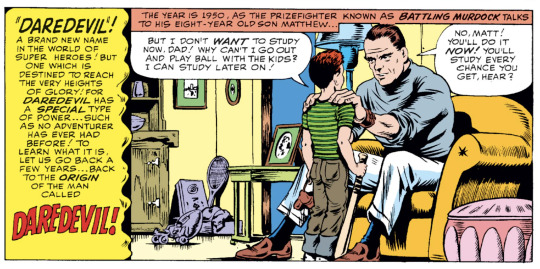
At its core, the story of Matt Murdock is an immigrant story. Matt has the immigrant mentality; immigrants-get-the-job-done type of thing. Gotta hustle and became a lawyer because that’s how he moves up the social and class ladder. And when he does “make it” he chooses to stay and help his neighborhood because he has a cultural connection to it.
This worked in 1964, I don’t know how much it works now.
Hell Kitchen isn’t a rough neighborhood primarily occupied by working-class immigrants, it’s another gentrified hipster hellhole. Irish people and people of Irish ancestry in the United States no long face systemic discrimination.
Therefore, modern-day recontextualizing is to make Matt Mexican.
Technically, Matt can also be from any other Latin American country or Filipino but I lean towards Mexican since a) this is my post go make your own and b) we get the most discrimination from the mainstream media. Yes, a lot of it is because racists use “Mexican” as a catch-all term for anyone from Latin America but still. Trump made his presidential platform by calling Mexicans illegal rapists and druggies.
If Matt was actually the son of Jack Murdock*, an undocumented brown immigrant living in a working-class immigrant/POC neighborhood, it gives him the underdog immigrant arc the character is missing in modern-day adaptations. Matt's core is still the same Matt we know and love, he’s still the son of a boxer, whose dad’s pushed him into succeeding academically, who lost his dad to gang violence, and who is extremely Catholic. Someone who wants to fit into middle-class educated (white) society and feels like he has to suppress the "devil" inside until one day he can’t. He's seeing discrimination and poverty and crime and gentrification tear his neighborhood apart and the police turn their back on it since it's predominantly POC. The law has failed them, he's not going to fail them too.
Meg made the fantastic point that Matt should still be white-passing (and ginger) so he could exist somewhere in between worlds. And Matt takes advantage of that, as well as his Columbia Law degree to help his community. Matt not using his conditional whiteness and the fancy degree to “escape” his community and instead help it.
#daredevil#matt murdock#daredevil comics#marvel#foggy nelson#karen page#comics#stan lee#mcu#charlie cox#usaigi meta#usaigi speaks#mateo murdock au
340 notes
·
View notes
Text
The M*A*S*H Time Loop
This was pretty much just a stream of consciousness writing. I haven't looked at it much since I wrote it a couple of days ago but I wanted to post it anyway.
The sitcom M*A*S*H ran from 1972 to 1983 and captured households around America. The series follows M*A*S*H (Mobile Army Surgical Hospital) unit 4077 through the Korean War. Knowledgable readers might have noticed that the Korean War lasted 3 years from June 1950 to July 1953 while the M*A*S*H series ran for 11 years from September 1972 to February 1983. This significant timeline difference created an interesting effect on M*A*S*H that led to many fans discussing the ‘M*A*S*H time loop theory.’ As the name would imply, this fan theory posits that the events of M*A*S*H do not take place during the Korean War as we know it, but instead that the show follows the 4077th as they are stuck in an endless time loop and are unable to escape the war.
Clearly, the timeline of M*A*S*H is a bit difficult to line up with the events of the actual Korean War due to the 8-year difference. Characters such as BJ Hunnicutt and Radar O’Riley were on the sitcom for 8 years but canonically it is difficult to say if they were meant to have spent the same amount of time in Korea. While the episodes were aired weekly, it is impossible to say if most of the episodes were meant to take place a week apart. There are several episodes for which we know this is not the case, for example, the season 9 episode ‘A War for All Seasons’ begins with the 4077th ringing in the new year and follows several key events throughout 1951 and ends on New Year’s Day 1952. This seems to imply that the previous 8 seasons all take place in 1950. It could also imply that subsequent episodes all take place in 1952 or later, though many assume that some episodes show events that were not seen in ‘A War for All Seasons.’ On the opposite end of the spectrum, several episodes take place over a matter of hours. The season 8 episode ‘Life Time’ happens essentially in real time as Hawkeye has only 20 minutes to complete an arterial graft on a wounded soldier. These and other episodes make creating a sensible timeline for the M*A*S*H series an incredibly complicated process. Trapper John leaves in the first episode of season 4, does this mean that he was only in Korea for 6 months? As mentioned earlier, Radar and BJ were on M*A*S*H for the same number of years, but Radar leaves before ‘A War for All Seasons,’ does this mean that Radar was enlisted for a year or less while BJ was present for 2 years? Does it matter how long any of these characters were engaged in the Korean War? The time loop theory certainly says no.
The nature of all sitcom television lends itself very well to the concept of a time loop. The show almost always resets itself at the end of every episode and it begins the next episode in essentially the same place. The order of the episodes often doesn’t matter. Everything is always happening, nothing happens, it doesn’t matter. In M*A*S*H specifically, one of the core themes of the show is the cyclical nature of war. It intentionally pokes fun at the repetition, the monotony with lines like ‘the future’s been canceled by the war department’ and ‘Father, what do you think of purgatory so far?’ as well as with aspects such as the omnipresent PA voice. Hawkeye Pierce becomes the main focus of the show and the audience's lens in many ways and as such is one of the easiest introductions to this concept. Hawkeye complains about being stuck nearly every episode and often phrases it as though he is not just stuck as a surgeon in a war zone, but as if his whole life is stuck, as if his past and future are all contained within the war. Another character giving credence to this theory is Radar O’Riley. Radar earned his nickname due to his uncanny ability to sense incoming wounded before anyone else and to predict what his commanding officers will ask for before they open their mouths. While this is certainly a fun gag for the show, many think it shows that Radar is aware, consciously or unconsciously, of the time loop. Radar is aware of when the choppers will arrive and when Henry needs files because it has all happened before and will happen again. Many fans also point out that this could be the reason for Radar’s reaction to Henry being sent home. It is more than just realizing that he will be left in Korea while the man he has come to see as a father figure goes home to his family. On some level, Radar remembers that Henry will not make it home; he knows he can not stop it. Of course one of the biggest pieces of evidence against the idea of a time loop is the fact that it does end. Everyone goes home in the end, however, this does not entirely disprove the theory. Many pieces of media that focus on the concept of time loops end with our protagonists escaping. But they can not escape entirely. Though all of our characters leave Korea by the end of the series, those who are still alive have not left completely. They will be stuck remembering this time forever.
While the original intention of M*A*S*H certainly was not to tell a story about a group of army doctors, nurses, and enlisted men trapped in a time loop, that is in many ways the story we got. It is the best showcase of the cycle, the monotonous horror of war in modern media. The only changes come with tragedy, death, or abandonment. It is a time loop in the only ways that matter.
#mash#m*a*s*h#mash 4077#m*a*s*h 4077#mash time loop#mash timeloop#time loop#timeloop#time loop theory#timeloop theory#hawkeye pierce#hawkeye#benjamin franklin pierce#bj hunnicutt#beej#radar o'reilly#walter o'reilly#trapper john mcintyre#trapper john#trapper mcintyre#trapper#mash writings#mash essay#mash theory#henry blake#sherman potter#margaret houlihan#mash analysis#m*a*s*h analysis
65 notes
·
View notes
Text
This evening, the House of Commons voted to pass a shameful motion on the Israel-Hamas war, brought forward by Jagmeet Singh’s NDP and supported in an amended version by Prime Minister Justin Trudeau’s Liberal Government.
While the motion doesn’t change Canada’s formal foreign policy, elements of its text are disturbing and unacceptable. Some provisions ultimately reward Palestinian extremists and undermine the security of the people of Israel—a democratic Canadian ally—including:
A call for an arms embargo on Israel, precisely when Israelis are fighting a defensive war launched by a recognized terrorist group; and
Reaffirmation of Canadian funding for UNRWA, despite evidence that UNRWA staff participated in the October 7th atrocities.
Tonight’s vote needs to be condemned for what it was: a slap in the face not only to our allies in Israel, but also to Jewish Canadians—just five months after the deadliest day for Jews since the Holocaust.
But our community can draw strength from our strong, united response in this moment of truth for Canada’s leaders.
In recent days, Jews and allies across Canada mobilized against the motion, including through the efforts of UJA, our advocacy agent the Centre for Israel and Jewish Affairs (CIJA), partner Federations, and other Jewish organizations. As just one example of our community’s strength, in a matter of days we collectively sent more than 900,000 emails to MPs through CIJA’s action alert system.
This strong, vocal stand was instrumental in ensuring a key clause—unilateral recognition of a Palestinian state—was cut from the motion in a last-minute amendment. This removed a critical demand of the anti-Israel movement, one that would have contradicted Canada’s longstanding policy that Palestinian statehood can only be reached through Israeli-Palestinian negotiations. Importantly, the motion was also amended to call for the release of all hostages and demand that Hamas lay down its arms.
Despite these changes, tonight’s vote reflects something we’ve seen far too often since October 7th: the shameful accommodation of radical voices. But our community will never stop fighting for the truth, for our values as Jews, and for the principles that have been core to Canadian democracy. Because to be Jewish has always meant to fight for what’s right, even when the odds are against us.
We will do so with profound appreciation for those MPs who opposed tonight’s motion—particularly Pierre Poilievre's Official Opposition Conservatives, as well as several members of the Liberal caucus.


Adam Minsky
President & CEO
Mar 19, 2024
23 notes
·
View notes
Text

The Invention of Hispanics: What It Says About the Politics of Race
America’s surging politics of victimhood and identitarian division did not emerge organically or inevitably, as many believe. Nor are these practices the result of irrepressible demands by minorities for recognition, or for redress of past wrongs, as we are constantly told. Those explanations are myths, spread by the activists, intellectuals, and philanthropists who set out deliberately, beginning at mid-century, to redefine our country. Their goal was mass mobilization for political ends, and one of their earliest targets was the Mexican-American community.
These activists strived purposefully to turn Americans of this community (who mostly resided in the Southwestern states) against their countrymen, teaching them first to see themselves as a racial minority and then to think of themselves as the core of a pan-ethnic victim group of “Hispanics”—a fabricated term with no basis in ethnicity, culture, or race.

This transformation took effort—because many Mexican Americans had traditionally seen themselves as white. When the 1930 Census classified “Mexican American” as a race, leaders of the community protested vehemently and had the classification changed back to white in the very next census. The most prominent Mexican-American organization at the time—the patriotic, pro-assimilationist League of United Latin American Citizens (LULAC)—complained that declassifying Mexicans as white had been an attempt to “discriminate between the Mexicans themselves and other members of the white race, when in truth and fact we are not only a part and parcel but as well the sum and substance of the white race.”

Tracing their ancestry in part to the Spanish who conquered South and Central America, they regarded themselves as offshoots of white Europeans.
Such views may surprise readers today, but this was the way many Mexican Americans saw their race until mid-century. They had the law on their side: a federal district court ruled in In Re Ricardo Rodríguez (1896) that Mexican Americans were to be considered white for the purposes of citizenship concerns. And so as late as 1947, the judge in another federal case (Mendez v. Westminster) ruled that segregating Mexican-American students in remedial schools in Orange County was unconstitutional because it represented social disadvantage, not racial discrimination.
At that time Mexican Americans were as white before the law as they were in their own estimation.

The process would only work if Mexican Americans “accepted a disadvantaged minority status,” as sociologist G. Cristina Mora of U.C. Berkeley put it in her study, Making Hispanics (2014). But Mexican Americans themselves left no doubt that they did not feel like members of a collectively oppressed minority at all. As Skerry noted, “[the] race idea is somewhat at odds with the experience of Mexican Americans, over half of whom designate themselves racially as white.” Even in the early 1970s, according to Mora, many Mexican-American leaders retained the view that “persons of Latin American descent were quite diverse and would eventually assimilate and identify as white.” And yet “Spanish/Hispanic/Latino” is now a well-established ethnic category in the U.S. Census, and many who select it have been taught to see themselves as a victmized underclass. How did this happen?
In other words, a distinctive set of beliefs, customs, and habits supported the American political system. If the Cajun, the Dutch, the Spanish—and the Mexicans—were to be allowed into the councils of government, they would have to adopt these mores and abandon some of their own. It is hard to argue that this formula has failed. Writing in 2004, political scientist Samuel Huntington reminded us that
“Millions of immigrants and their children achieved wealth, power, and status in American society precisely because they assimilated themselves into the prevailing culture.”
Indeed, merely calling Mexican-Americans a ‘minority’ and implying that the population is the victim of prejudice and discrimination has caused irritation among many who prefer to believe themselves indistinguishable [from] white Americans…. [T]here are light-skinned Mexican-Americans who have never experienced the faintest…discrimination in public facilities, and many with ambiguous surnames have also escaped the experiences of the more conspicuous members of the group.”
Even worse, there was also “the inescapable fact that…even comparatively dark-skinned Mexicans…could get service even in the most discriminatory parts of Texas,” according to the report. These experiences, so different from those of Africans in the South or even parts of the North, had produced
a long and bitter controversy among middle-class Mexican Americans about defining the ethnic group as disadvantaged by any other criterion than individual failures. The recurring evidence that well-groomed and well-spoken Mexican Americans can receive normal treatment has continuously undermined either group or individual definition of the situation as one entailing discrimination.
It is incumbent on us to pause and note exactly what these UCLA researchers were bemoaning. Their own survey was revealing that Mexican-Americans’ lived experiences did not square with their being passive victims of invidious, structural discrimination, much less racial animus. They owned their own failures, which—their experience told them—were remediable through individual conduct, not mass mobilization. Their touchstones were individualism, personal responsibility, family, solidarity, and independence—all cherished by most Americans at the time, but anathema to the activists.
The study openly admitted that reclassification as a collective entity serves the “purposes of enabling one to see the group’s problems in the perspective of the problems of other groups.” The aim was to show “that Mexican Americans share with Negroes the disadvantages of poverty, economic insecurity and discrimination.” The same thing, however, could have been said in the late 1960s of the Scots-Irish in Appalachia or Italian Americans in the Bronx. But these experiences were not on the same level as the crushing and legal discrimination that African Americans had faced on a daily basis. That is why the survey respondents emphasized “the distinctiveness of Mexican Americans” from Africans and “the difference in the problems faced by the two groups.” The UCLA researchers came out pessimistic: Mexican Americans were “not yet easy to merge with the other large minorities in political coalition.”
Thereafter, militants from La Raza, MALDEF, and other organizations put pressure on the Census Bureau to create a Hispanic identity for the 1980 Census—in order, as Mora puts it, “to persuade them to classify ‘Hispanics’ as distinct from whites.”
The Hispanic category was a Frankenstein’s monster, an amalgam of disparate ethnic groups with precious little in common.
The 1970 Census had included an option to indicate that the respondent was “Mexican, Puerto Rican, Cuban, Central or South American, [or] Other Spanish.” But re-categorizing Mexican Americans and lumping them in with other residents of Latin American descent under a “Hispanic American” umbrella was a necessary move, Mora writes, because “this would best convey their national minority group status.”
The law states that “a large number of Americans of Spanish origin or descent suffer from racial, social, economic, and political discrimination and are denied the basic opportunities that they deserve as American citizens.” The very thing that defined Hispanics was victimhood.
IT IS SHOWN THAT THE HUMAN CATEGORY "WHITE" WAS BUILT UPON THE IDEA OF THAT BRITISH AS WHITE, CHRISTIAN, OF THEIR ESSENCE FREE,AND DESERVING OF RIGHTS AND PRIVILEGES FROM WHICH THOSE INSUFFICIENTLY BRITISH -LIKE COULD BE DENIED. JACQUELINE BATTALORA "BIRTH OF A WHITE NATION.
#hispanics#latina#afro latina#curvy latina#latin girls#latinx#sexy latina#thick latina#latino#kemetic dreams#brownskin#brown skin#mexican#mexicana#mexico#mexique#mextagram#white#black and white#white house#census data#censura#qsmp census bureau#u.s. census bureau#tumblr censure#the invention of the Hispanic#african#afrakan#afrakans#africans
72 notes
·
View notes
Text
[T]he political philosophy underlying Westphalian, modern sovereignty [...], foundations of the modern state, [...] [formed] in relation to plantations. [...] [P]lantations [are] [...] laboratories to bring together environmental and labor dimensions [...], through racialized and coerced labor. [...] [T]he planters and managers who engineered the ordering and disciplining of these [...] [ecological] worlds also sustained [...] [p]lantations [by] [...] disciplining (and policing the boundaries of) humans and “nature” [...]. The durability and extensibility of plantations, as the central locus of antiblack violence and death, have been tracked most especially in the contemporary United States’ prison archipelago and segregated urban areas [...], [including] “skewed life chances, limited access to health [...], premature death, incarceration [...]”. [...]
Relations of dependence between planters and their laborers, sustained by a moral tie that indefinitely indebts the laborers to their master, are the main mechanisms reproducing the plantation system long after the abolition of slavery, and even after the cessation of monocrop cultivation.
The estate hierarchy survives in post-plantation subjectivities, being a major blueprint of socialization into work for generations and up to the present. [...] [Contemporary labor still involves] the policing of [...] activities, mobility and access to citizenship [...].
---
[There is] persistence - until the 1970s in most Caribbean and Indian-Ocean plantation societies, and even until today in Indian tea plantations [...] - of a system of remuneration based on subsistence wages [...]. Plantations have been viewed as displaying sovereign-like features of control and violence monopoly over land and subjects, through force as much as ideology [...]. [W]itness the plethora of references to “plantocracies” [...] ([...] sometimes re-christened “saccharocracies” in the Cuban and wider Caribbean context [...] [or] “sovereign sugar” in Hawai’i). [...]
[T]race the genealogy of contemporary sovereign institutions of terror, discipline and segregation starting from early modern plantation systems - just as genealogies of labor management and the broader organization of production [...] have been traced [...] linking different features of plantations to later economic enterprises, such as factories [...] or diamond mines [...] [,] chartered companies, free ports, dependencies, trusteeships - understood as "quasi-sovereign" forms [...].
---
[I]n fact, the relationships and arrangements obtaining in the space of the plantation may be analogous to, mirrors or pre-figurations of, or substitutes for the power and grip of the modern state as the locus of legitimate sovereignty. [...] [T]he paternalistic and violent relations obtaining in the heyday of different plantations (in the United States and Brazil [...]) appear as the building block and the mirror of national-imperial sovereignties. [...]
[I]n the eighteenth-century [United States] context [...], the founding fathers of the nascent liberal democracy were at the same time prominent planters [...]. Planters’ preoccupations with their reputation, as a mirror of their overseers’ alleged skills and moral virtue, can thus be read as a metonymy or index of their alleged qualities as state leaders. Across public and private management, paternalism in this context appears as a core feature of statehood [...]. Similarly, [...] in the nineteenth century plantations were the foundation of the newly independent Brazilian empire. [...] [I]n the case of Hawai’i [...], the mid-nineteenth-century institution of fee-title property and contract labor, facilitated by the concomitant establishment of common-law courts (later administered by the planter elite), paved the way to the establishment of sugar plantations on the archipelago [...].
---
[T]he control of movement, foundational to modern sovereign claims, has in the plantation one of its original experimental grounds: [...] the demand for plantation labor in the wake of slavery abolition in the British colonies (1834) occasion[ed] the birth of the indenture system as the origin of sovereign control on mobility, pointing to the colonial genealogy of the modern state [...].
The regulation of slaves’ mobility also represented a laboratory for the generalization of [refugee, immigrant, labor] migration regulation in subsequent epochs [up to and including today] [...] [subjugating] generally racialized and criminalized subjects [...]. [P]lantations appear as a sovereign-making machine, a workshop in (or against) which tools of both domination and resistance are forged [...].
---
All text above by: Irene Peano, Marta Macedo, and Colette Le Petitcorps. "Introduction: Viewing Plantations at the Intersection of Political Ecologies and Multiple Space-Times". Global Plantations in the Modern World: Sovereignties, Ecologies, Afterlives (edited by Petitcrops, Macedo, and Peano). Published 2023. [Bold emphasis and some paragraph breaks/contractions added by me. Presented here for criticism, teaching, commentary purposes.]
27 notes
·
View notes
Note
yooo, your posts are awesome man! definitely make my day better when readin em. anyhow, i had an idea i wanted to share based on the weaponsmith human idea!
what if the alliance scientists are impressed by the human's skills, and offer them the more advanced/sci-fi materials they use for the alliance weapons? what kinda tools would they make, and how would their friends n the mimics react to it?
I think if the human was given access to the advanced weaponry and utilities, they would be in weaponsmith heaven! They would definitely play with knives, swords, and advanced add-ons that can make multiple weapons better!
For Camron, they would gift him an upgraded stungun with a higher frequency output, a built in plasma ballistics knife for close combat, and a laser function to blast stronger skibidis to dust. They even put his name on it, so if anyone "borrows" it, he can find the culprit! It's such a cool weapon!!
For DJ, they give him the "cardiac pulse blaster", which functions similar to a speaker mimic's blast, albeit not as strong as the real thing. It can penetrate headphones and disrupt a foes' cardiac rhythm, however it doesn't fully kill the unit. Instead, it's the stress of battle that actually kills the skibidi. So DJ can strike multiple targets and they will all eventually have heart attacks because of the battle. Giving him the highest kill count in his battalion!
Vee is gifted better blades for his own personal use. Made with electrified obsidian and charged remotely through the pulses of his own core, his knives are now able to cleave through metal and porcelain. They are also now longer and have "reaper" shapes to them, allowing him to swing effectively in both directions. They also have his "name" on it, V. It's cherished by Vee a lot.
Buddy is given special armor to coat his body and electrified claws to enable him to cripple his enemies. He didn't want too much of an upgrade, but the armor certainly does help him take less damage and hits while out on the front lines. He also appreciates the coverings for his feet and claws, as they help insulate him from heat and cold. But now, the human upgraded them and he can now climb up walls and surfaces and stick to them too! It makes him much more of a threat on the field now that he can't be stopped by walls or other obstacles!
Pal was given the blades for his arms, but the human then decides to upgrade them into a super-heated variant. This upgrade allows Pal to slice through enemies with a clean cut JUST from flying by! They also add on some equipment to his frill, which carries an electromagnetic charge. So once Pal uses his sound blast, it also turns it into a mobile EMP attack, which shuts down the skibidi forces to a standstill and makes them sitting ducks! What an ingenious idea, human friend!!
Fiend is gifted more armor, but is also fitted with mobile flying attacking drones that he can control via his manipulative powers. These drones can cover most weaknesses and counters that the human could think of. They can become electrified, super hot, with obsidian blades that cut through most armor and materials. As well as parasite samples from the TV units that enable them to latch onto their enemies and manipulate them via Fiend's abilities. They are hilariously called "channelers" because they carry out the will of Fiend. When tired or low on energy, they return to Fiend and latch onto his carrying pack that's on his back. Strangely enough, Fiend has even become protective of the little units. How odd.
#haxorus imp#hax speaks#cosmica galaxy#cosmica-galaxy#anonymous#anon asks#skibidi tag#anon ask#skibidi toilet mimic#skibidi mimic
31 notes
·
View notes
Text
M.A.S.S. Builder: MPMCL-CQK
A post for the MPMCL-CQK.
I should've done this sooner so I could move onto other stuff but oh well whatever ig.

The descent of the MPMCL-CQK after being dropped off from an unknown cargo plane. Many others will soon follow.




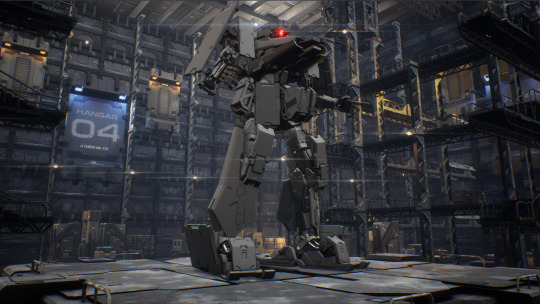
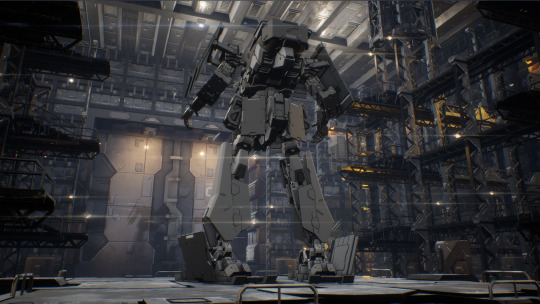
Hangar Picture
Specifications (Pasted from the MASS Builder Community Discord):
Basic Information
Company: ATMRRI
Designation: MPMCL-CQK
Height: ~5 Meters
Mass: 8.7 Tonnes
Armaments
Arms:
]- SG-280CN [Cluster Napalm]
Shoulders: N/A
Back: N/A
Secondary:
]- Hip mounted Napalm Cluster Rockets
]- Beehive Grenade Launchers
Features
Protection:
]- Spaced Armor Plates
]- No composites at all
Mobility:
]- Atmospheric Plasma Thrusters
]- 2D Thrust Vectoring
]- Carbon nanotube Artificial Muscle
Misc:
]- High Capacity Lithium-Sulfur Battery
]- Controlled by a very simple Fully Autonomous Unit
]- FAU can be replaced with a cockpit if needed
]- The bare minimum of sensor units required to function
History
A very simple and easy to produce unit. The MPMCL-CQK's (Mass-Produced Mobile Core Light - Close Quarters Kit) sole purpose is to wreak havoc in whatever site it's deployed to before being destroyed or self destructing. As such, it's made out of very simple materials and features barely any protection, with only spaced armor plates are used in order to protect it from some small-arms fire, debris, and from HEAT munitions. For its role, it features a high capacity shotgun loaded with napalm munitions, hip mounted napalm cluster rockets, and anti-personnel/light vehicle grenade launchers outfitted throughout the body. These napalm munitions are far more deadly than traditional ones, being capable of completely melting enemy vehicles within seconds and doing the same for fortifications. In the event that the MPMCL-CQK is hit, the most likely scenario will be the unit turning within a puddle of molten metal along with additional shrapnel and debris. In the event that it either completes its objective without dying, gets disabled without setting off its munitions, or runs out of ammo, the FAU will self-destruct and render its systems completely unusable. As such, the MPMCL-CQK can only be described as a walking warcrime.
Specifications and description for the ATMCM-IFK originally posted 01/17/2022
8 notes
·
View notes
Text
After the Battle
Content warning that this story goes a little dark, and does involve death
When you're inside a mech, military rank doesn't matter anymore. Every pilot knows this. Between the hormone cocktails given to every pilot and the chemically fueled rushes of battle produced by the neural sync, the only thing that matters is the will of the machine, dominants and the submissives.
The call came in from command, "All targets cleared, recon squad disengage and return to base". You and your partner stoped your forward march and took a moment to assess the surroundings.
Your handler acknowledges the command as well, calling in "Good work recon-1, begin post op procedure and return to your bay at base." A grin breaks out across your face, this is always your favorite part.
Command always turns a blind eye to this ritual the pilots have adopted. The neural link relies heavily on conditioning pleasure with violence and pilots, especially on low combat missions, often need to unwind and release the pent up frustration they may have accumulate. They often take it out on each other, causing more damage than their deployment ever would have in the process. Post battle spars were common on the front, with each pilot fighting until they get off
You look over at your partner with a devilish look. A total newbie, one of their first few rides in the chair. An excellent target to get what you need out of. You make your approach, hearing the confusion in their voice, as you pick up the scythe dropped from the last deployment.
Without warning you strike, pinning the mech and its pilot to the wall. You hear a meek whimper, cementing their position as your prey. You feel a heat growing in your cockpit, machine reciprocating your excitement and egging you on. The newbie obviously unaware of the ritual, caught by surprise and unable to defend themself.
You start to tear at their armor panels, slowly and surely, leaving the helpless rookie exposed. The coursing hydraulic lines, wiring, and inner frame all exposed for you to toy with. Desperate pleas come over the comm line but you don't intent to stop. not while you haven't gotten your fill.
You start to turn your attention to the various subsystems, prying off guns and fingers from the hands. each tear sending pleasure coursing through your crotch. Hydraulic fluid spraying wildly over your mech, sparks flying through the air.
With a swift slice you pry off the arms, leaving he poor thing defenseless as your work on the legs. removing the dense mobility systems, the auxiliary batteries, as you finally do the same to the legs. immobilizing your prey as you inch ever closer.
With a core and a cockpit left, the primal urge takes over, needing to get your final release before returning from base. The desperate pleas of your partner end as your handler closes the comm channel, as you push the blade right through the cockpit and you explode in pleasure. You feel the machine praise you through the neural link, encouraging and reinforcing your behavior.
You pick up the core from the now destroyed unit and begin to make your way back to the bay, as you hear your handler say "Good work puppy. Ill be sure to reward you myself after your debrief"
---------
This was inspired by a lil scene i did with @foxgirlwitch on discord today!
42 notes
·
View notes
Text
Space Suits - Then and Now
Since the dawn of the space age on Reyal, it became abundantly clear that there were many challenges they'd have to face.
As a social species, they struggle with solitude; the first few missions were a nightmare, as the panic from being detached from friends and family became a big issue. However, that was manageable with therapy and much shorter solo missions.
Radiation was a much more pressing issue, and after the long-term health affects became clear from the relative lack of protection, major steps were taken to build suits that would withstand the harsh environs of space.
Reyal is a very unique world, in that its thick atmosphere and highly active core provided much more shielding from cosmic and solar radiation than our own Earth would. This led to pretty much every life form on Reyal being much more susceptible to radiation's harmful effects, which would prove to be a very difficult roadblock on their technological voyage.
There was much discussion as what type of suit would be better after regular flight suits were proven to be ineffective; hardshell, which was heavy and hard to maneuver in but gave incredible protection, or soft shell, which was a tiny bit easier to work in, but offered barely any protection.
After some research and development, a mix was approved for use; soft around the joints, with most of the rest of the body being hardshell. It wasn't ideal, but there was very little else that can be done to combat the lack of mobility.

Art by @bjekkergauken
After years of development, hard work, and testing, the first deep space suits were approved for regular use. The above is a display model; showing heraldry only for the Global Resource Committee's Space Division, and crampons for a rocky or icy moon.
These used many new technologies and techniques to help protect the wearer, such as a camera based vision system. This not only helps protect the eyes, but can allow for a better understanding of the environment around the wearer, being able to cycle into different types of light wavelengths.
Some other useful features are the claw grabbers that replace the gloves, allowing for much easier mobility in the vacuum. Initial testing proved that softshell gloves were a nightmare to work with, causing many engineers to nearly quit out of frustration. A few late night brainstorming sessions later, they figured out that using a manipulator was much easier than anything else. This would become a mainstay for future suit design, and open up a massive world of possibilities for on-orbit construction and more.
Aside from that, the suit also boasts a data pad for easy communication & lookup, a jetpack for low-or-no gravity environments (fueled by pure nitrogen), and a hatchback for hooking up into vehicles for easy doffing and donning.
These suits were used en masse for many years, in a massive variety of situations; from low Reyal orbit and all the way out to Alkan and her twin, they saw very heavy use for the first few decades of the Lyratet's expansion into space.
However, as their needs expanded, the old generation of suits would prove to need an upgrade. Cameras failing while out, data pads falling off, life support issues, outdated technology, and more would be the sign that things had to change.
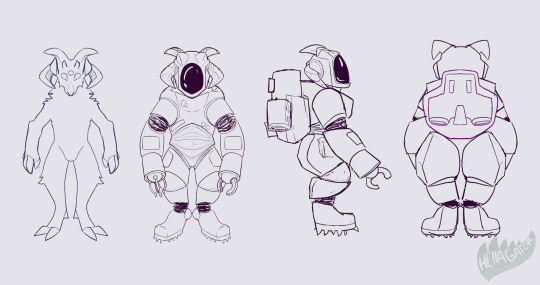
Art by @hellagator
Five years before the launch of the First Extended Thrallit Expedition, the Global Resource Committee finally approved and released the latest design; the Modular Deep Space Maneuvering Unit, or the MDSMU for short. This would be a massive upgrade from the previous design, making up for most of its shortfalls.
With advances in material science and a better understanding of life and work in space, the MDSMU sported much better mobility, all without sacrificing any radiation protection. A thin layer of a lead alloy, alongside water ice, was added to help aid in deflecting any harmful radiation. Aside from this, most everything is the same.
The same applies for the new and improved helmet, which allows for both regular vision, alongside the original camera vision. The visor is made of a heavy layer of leaded titanium glass on the outside, followed by a thin layer of water ice, and finally a quantum dot display on the inside. While it's just as safe to use regular vision these days, many still opt to cover up the outside, and use only the camera.
Another major advancement is the modular ability of the suit; while the previous design was used in a variety of situations, it wasn't very practical for exploration out past Alkan, or in the inner system past Reyal. The suit has dozens of other parts that can be swapped out or added, ranging from underwater maneuvering addons for Alkan, to an extended heating system for cave diving on Lejag, the outermost planet.
The suit can also be very easily modified to suit any changes to the wearer’s body, or in a swapping of people wearing it, thanks to machine learning and a complex system of elastic and memory foam. The only thing that doesn't change is the horn armor; GRCSED standards have them set to a certain height, mainly for ease of access among their many bases and outposts, and the dangers that come with overgrowth.
The only thing that would change would be the fuel used over the centuries; originally, monomethylhydrazine was used for fuel as an improvement upon just raw nitrogen. However, as some spills occurred in a few bases, it was quickly replaced with nitrogen once more due to the toxicity of the prior.
This suit design would be the last they would ever design, as the base was very easy to modify for practically any situation. From routine maintenance on Ro, all the way to the interstellar colony of Reyal-Lontag, the suit would see continued use until the end of civilization as we know it.
#my posts#worldbuilding#writeblr#creative writing#reyal#sophonts#as we go along#scifi#science fiction#scifi writing#scifiart#space opera#space exploration#spacesuit#spacesuits#radiation#writing#authors of tumblr#bookblr#booklr#novelist#aliens#alien#lyratet life & work#lyratet tech#<new tags for future posts!
15 notes
·
View notes
Text

- Caw4B's : ANIS AND THE SERPENTS -
Anis Rusli makes another snakey return with a mild change in her design. Anis Rusli (Pronounced as: A-knee-s Rue's-lee) is a character based on a local Malaysian Legend.
Legends among village folk and fishermen in some parts of the Malaysian Peninsula tell tales of a mysterious phenomenon that they witnessed and survived to tell the tale. A creature that is suggested to be larger than the boats due to the amounts of bubbles it produces from beneath the murky waters.
The Sulur Bidar (Su-lur Bi-da-r) is a Man-eating carpet monster who is said to look like a normal carpet/Tikar (a type of woven mat) with snake heads for tendrils on each corner. In some illustrations, they are described to have a beautiful woman's head as a lure.
If you ever get curious and get too close. The Sulur Bidar will release a foul odor. Described to have a disgustingly old chicken eggs smell. The creature will then unleash its snake heads and drown its victims like a burrito to be consumed.
The legends say, the Sulur Bidar is a type of Jin/demon that likes to disturb/eat mortals. However, modern explorations believe that its a scientific phenomenon called, Oil and Gas. Which releases a lethal gas known as Hydrogen Sulphide.

- Meet ANIS RUSLI -
Anis Rusli is the human torso part of this body. A beautiful and rather young-looking girl who dwells on both the surface but mostly living in the wild by the local rivers. By appearance, she is about twenty-one-years-old or so but her actual age is centuries older.
In public, Anis is elusive. Often attempting to avoid contact. She is seen covering up from face to bottom in layers of clothes to avoid suspicion. However, once you get to know her. Anis is actually a cheery girl who is both kind-hearted and fiercely protective. Her serpent sisters are named as the following;
Tepi The Left - The Dominant and aggressive striker.
Depan The Bottom - The Mobility, muscle and biggest eater.
Belakang The Right - The Assistant and silly little jokester.
As a unit, They function in perfect synchronicity. Anis plans and leads her team. Depan moves defensively as the limb to avoid blind spots. Lastly, Tepi and Belakang strike opponents in turns.

- Anis Fun Facts -
The name; Anis is of Arabic origin. Meaning; genial or close friend.
Anis's voice is described as "sweet and soothing; may put you to sleep."
Anis's hair color is described as; Raspberry. A rather maroon-ish red with hints of purple in the mix.
Anis is a natural Bilingual. She is fluent in, Malay and English. She knows a little bit of Mandarin and Cantonese through Chinese and Hong Kong Dramas.
Anis and her sisters share a secret language. Some would even say its technically Parseltongue but Anis replies in Malay (Which is her native language)
The names of the Serpents is a reference to local icebreaker game known as [Tepi, Depan, Belakang] Translation; Side, Front, Back.
Contrary to her actual species, Anis hates eating humans and considers them as "junk food" She eats normal human food.
Anis's sisters however, eats regular snake food such as rats, bird eggs or other small mammals.
In MTCR, Anis is nicknamed as Guardian of the Emerald Forest and the Serpent Witch of Kingshaven.
Anis is inspired by three core characters; Sucy Manbavaran, Misato Katsuragi and Olivia "Liv" Octavius.


#murder the crow reforged#murder the crow#kingshaven#kingshavenacademy#anis rusli#sulur bidar#anis the sulur bidar#serpents#tepi depan belakang#Malaysia#mythology#cryptid#southeast asia#monsters#sucy manbavaran#misato katsuragi#olivia octavius#little witch academia#neon genesis evangelion#spiderman into the spiderverse
13 notes
·
View notes
Note
Any good stuff for psychic vigilantes fighting from the shadows? Apologies if this is too vague or if I’m asking wrong.
THEME: Psychic Vigilantes.
Oh boy oh boy I am excited about this ask!! Buckle up, this week's gonna be a good one!! I got some pulp action goodness, some horror, and some cyberpunk for you.




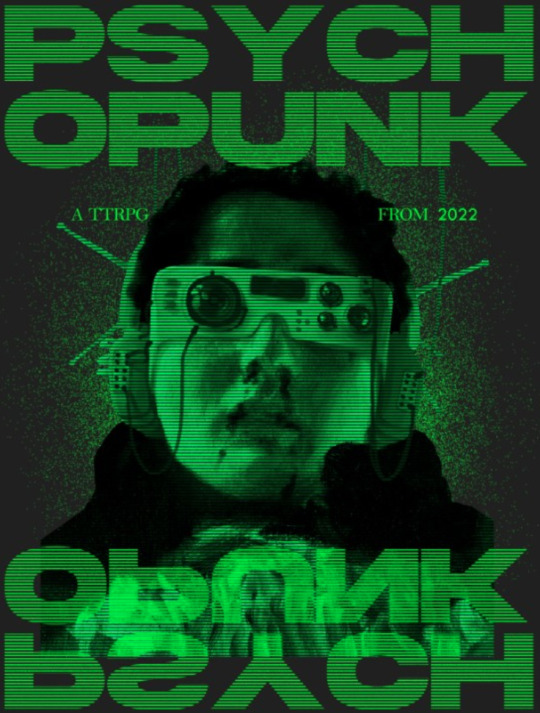
Psych-0 Team!, by John Pineapple.
A one-page TTRPG about psychic agents saving the world! Heavily inspired by the TTRPG "Lasers and Feelings”.
This is a game about being psychic secret agents, so it’s a very different feeling from being on the run from the law. However, I think it might be a good introduction to something a bit grittier, and could possibly be re-tooled to make you part of a secret vigilante organization as well! The game system is very lightweight, using only d6’s, and implements a staggered level of success, so not every win will look or feel the same. Definitely worth checking out!
Psi*Run, by Meguey & Vincent Baker.
Whoever’s after you, you know one thing: they will stop at nothing to capture you and you’ll stop at nothing to stay free. The holes in your memory vie for attention with your startling abilities - stay one step ahead of the Chasers long enough to answer your questions, and hope your psychic powers don’t go wild.
I don’t know much about this game specifically, but Meguey & Vincent Baker of Lumpley Games have made their stamp on the ttrpg scene with games like Apocalypse World, Under Hollow Hills, and Mobile Zero: Firebrands. Their approach to game design births games with mechanics that replicate emotions and genre mainstays very well. I expect this game to do the same for a game about being insanely powerful and yet always on the run.
Bellbottoms and Brainwaves, by Mekkekat.
The United States military has been conducting secret experiments on “willing” subjects in a program called PSY-CLOPS (Psychic Covert Learning Operatives). The program has successfully created a 6th sense in a REDACTED number of subjects. This 6th sense can manifest within a subject in several ways, but all of these abilities are simply referred to as ‘powers’. The project has been funded for the past REDACTED years, but in last month, there was a problem. The Pentagon wants answers. REDACTED subjects have managed to escape.
This is a brutally short game that places you right into a cinematic 1960’s, with each character given a different suite of powers - and a different list of consequences that can get pretty brutal pretty quickly, so make sure you go over the possibilities with your group and apply safety tools in this kind of game. This game starts you out as on the run from a government agency, but go on the run long enough and you’re a vigilante by default, aren’t you?
The game itself is free, and if you want an online character keeper, I’ve made one here!
Syndrome, by Ill Advised Gaming.
Syndrome is a cyberpunk setting with strong elements of body horror in the vein of Scanners or Akira. High tech, low lifes dealing with illness in a society that fears them. Powerful and vulnerable in equal measure with only their fellow Nockers for support.
Built off of Caltrop Core and borrowing elements of systems like Apocalypse World and Unified Cutlery Theory, Syndrome frames psychic abilities as a metaphor for disability; in a world where data chips and facial recognition software are par for the course, psychics are off the map. Invisible. Marginalized. Perfect for both poverty and vigilantism. Syndrome is a pretty horror-heavy game, so I wouldn’t advise trying to run a power-fantasy in this game, but if you’re looking for a way to talk about living on the margins with some unique tools to strike back, it might be worth checking out!
Psychopunk, by Gormengeist. (@gormengeist)
PSYCHOPUNK is a TTRPG about being poor, being psychic, and murdering law enforcement. In order to play, you need a deck of cards, a d12, paper and pencils, and a can-do attitude. It's best with one game master [A.K.A the Scripter], and 2 to 5 players.
The year is 2022. Being poor is punishable by death- or perhaps worse- Time Prison. You are poor. But you’re also psychic, which very few lowly peasants such as yourself are. This means that where most people in your situation are rat meat, you are (probably) alive. For now.
If you want to keep it that way, you’ll need to evade the law, keep up on your Double Dollars ($$), and scuz some fucking corpos before they scuz you.
Another cyberpunk game about psychic powers, I love the pitch for this game. It’s mean to kick you down and force you to get back up scratching and bleeding and screaming. It comes with 12 life paths, 12 psychic abilities, 8 different signature enemies and everything you need to run deadly quick combat. Also it’s published by Gormengeist, who really knows how to find a theme and sell you on it. Check it out!
46 notes
·
View notes
Note
What are your favourite things about Chrobin (FEH) as a ship? Feel free to expand as much or as little as you want in terms of details! 💜
Aw, thanks friend! I'm super excited to answer this question! For anyone who isn't aware, Chrobin is the name of a ship from Fire Emblem Awakening (Chrom/Robin). They also appear in the mobile game, Fire Emblem Heroes (FEH).
Note: When I talk about Robin in general, I use gender neutral pronouns (they/them). Unless I'm talking about a specific Robin from FEH.
I also have spoilers for Fire Emblem Awakening here.
Let's get started!
Reasons I love Chrobin
I think the core reason why I love Chrobin so much is summed up nicely in this post HERE (not my post). I highly recommend reading it to understand the full picture, but in general:
I like Chrobin because it wasn't intended to be "canon" yet recently Intelligence Systems (I.S.) seems to be pushing it as a "heavily implied canon pairing".
I think it's so funny that within the game proper I.S. strongly intended/hinted that Sumia is Chrom's "canon wife". Yet in recent material for Fire Emblem Awakening (in Heroes), this perspective has shifted drastically to focus on Robin. And that the first time we as a player base saw this "unofficial shift" was in the Valentine Banner with Duo Chrom.
Now, I know the logical answer to why they paired Duo Valentine Chrom with Male Robin is because they didn't "want to suggest a canon pairing with Female Robin". However, when past Valentine Duo units HAVE been canon couples/ very strongly hinted canon couples (such as Alm/Celica), there was no way the fandom was going to sit and go "yeah, this is 100% heteronormative". Nope! Instead I saw fanart for months after that banner's drop with all the gay Chrobin dancing across my dashboard.
However, the cherry on top is how it seems I.S. is leaning into Male Robin/Chrom HARD. I'm still not over the Engage paralogue, I.S. They're spirits. Together. In a Ring. Are you kidding me??
Also, I love how I.S. simply isn't separating Chrom and Robin. Look at our most recent example is with our new Young Awakening banner dropping tomorrow. I.S. is once again did NOT separating Chrom and Robin (this time a duo unit with Female Robin in lead). I hope this won't be the last time I.S. strongly "suggests" Chrobin because I'm loving this.
Love is presented as both a character flaw and strength regarding Chrom's death at Robin's hands.
Due to being a strong Chrobin shipper, every time I think about the bad timeline, I want to scream my feelings out to the world. Chrom dies by Robin's hand only because they're possessed by the Fell Dragon, Grima. There could have been other ways to kill Chrom, I'm certain, but the implication that having Robin do it was the most efficient way to do it? That Chrom would never see that coming because of the trust, loyalty, love, and devotion to Robin?
(Or what about Lucina? If Robin is one of her parents this means Lucina willingly travelled back to the past knowing she has to kill Robin. That's the entire point of time travel is to stop the apocalypse. The only way is to kill Grima's vessel AKA Robin. Yet, she can't do it.)
Are you kidding me, I.S.?? I need to scream into my pillow all my feelings.
They always had chemistry (my opinion) in their supports, but Heroes and Engage only added more.
Look. I walked into Awakening blind and I 100% firmly believed in my first play through that Chrobin was end game. I thought their relationship dynamic was interesting and clearly charged with "they are more than just friends" energy. We add in the Duo conversation/dialogue from the Awakening Valentine banner + Engage's entire paralogue with them?? I'm looking at I.S. like I'm looking into the camera from The Office.
And there you have it friend. I know I have other reasons why I like this ship but here are my core reasons. I hope you like this answer!
13 notes
·
View notes